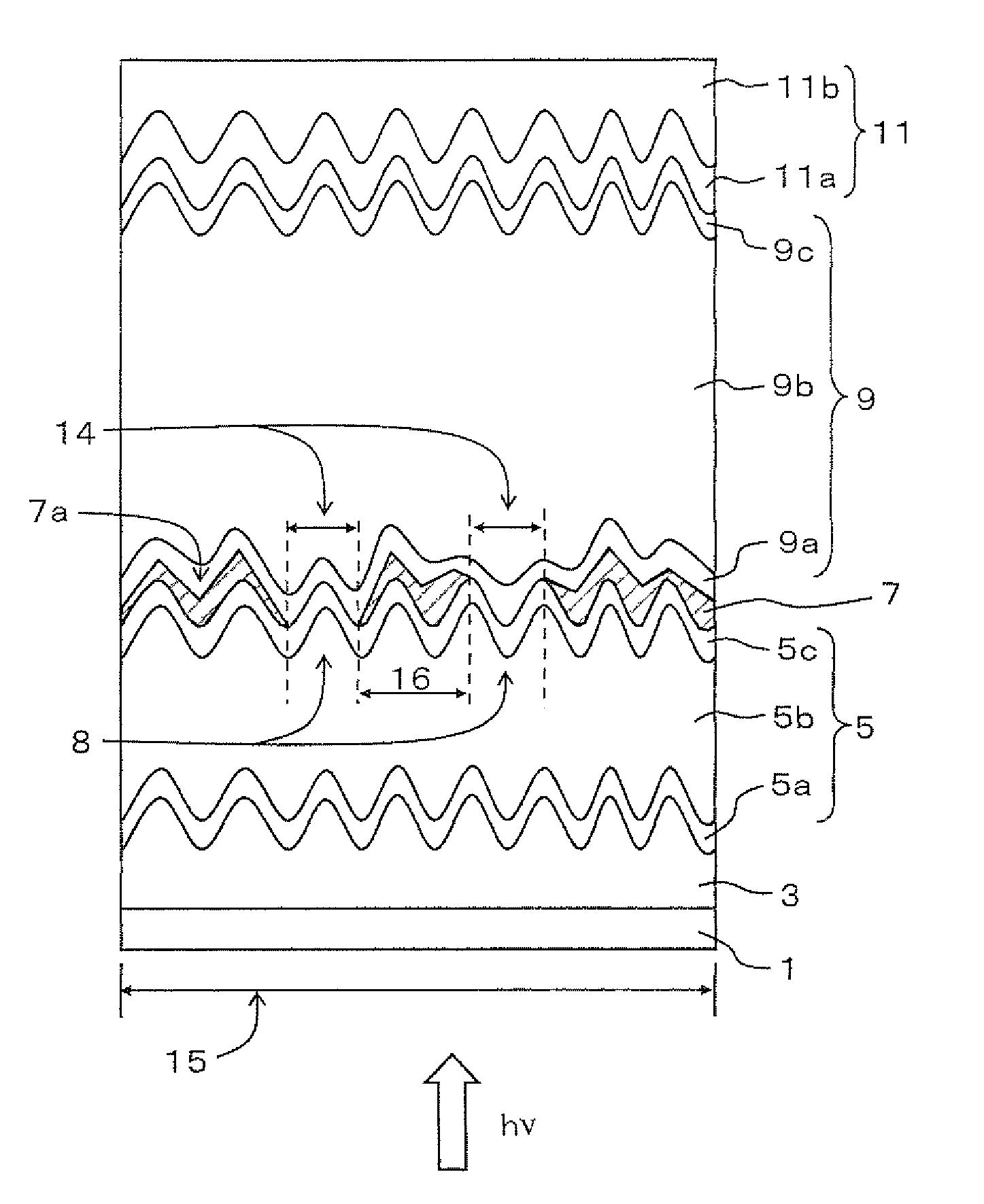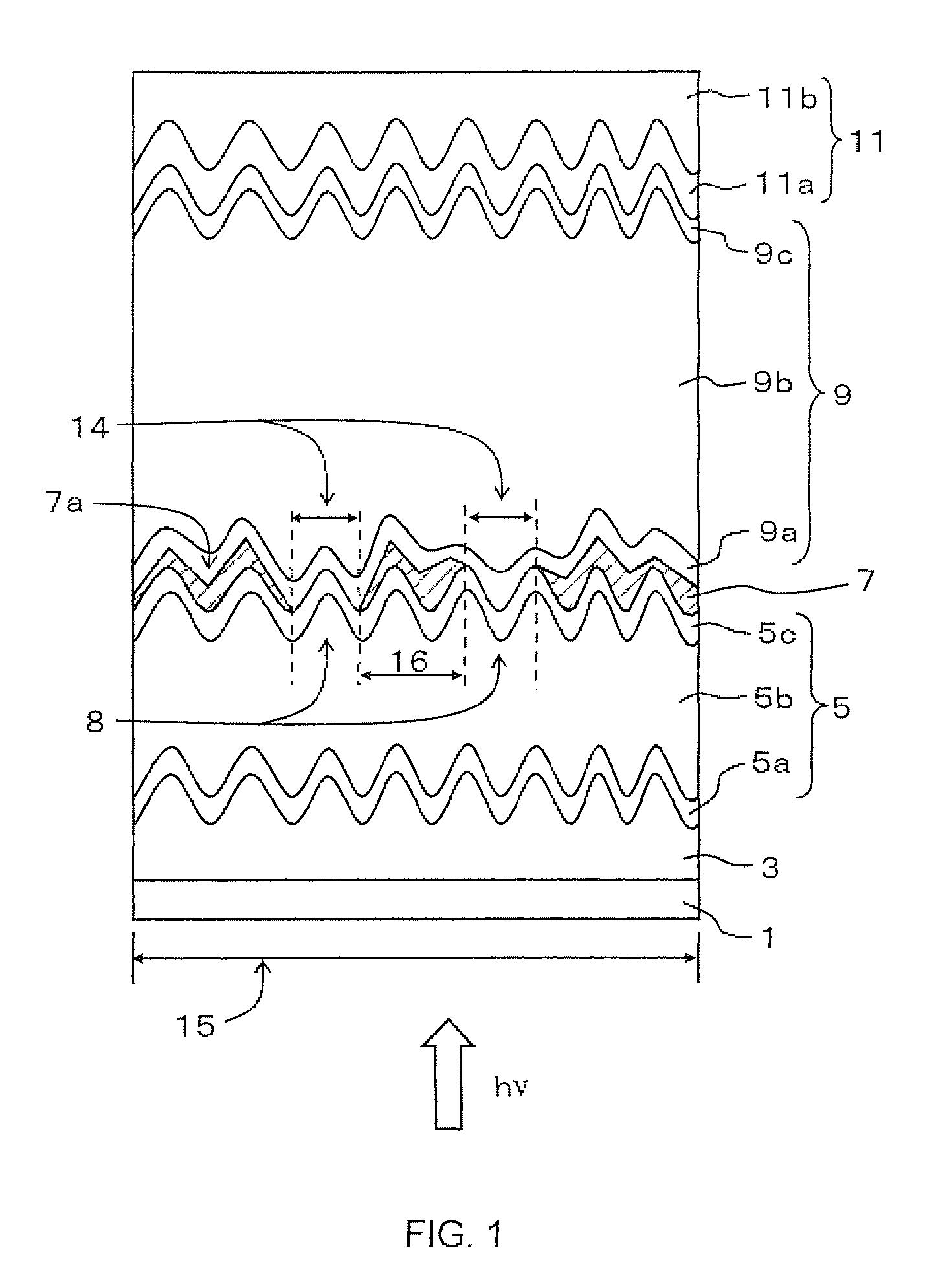Stacked photoelectric conversion device and method for producing the same
a photoelectric conversion and stacked technology, applied in the direction of semiconductor/solid-state device manufacturing, semiconductor devices, electrical devices, etc., can solve the problems of lack of raw materials in bulk solar cells, reduce the non-bonding hands of silicon, reduce the recombination of carriers, and enhance the photoelectric conversion efficiency
- Summary
- Abstract
- Description
- Claims
- Application Information
AI Technical Summary
Benefits of technology
Problems solved by technology
Method used
Image
Examples
embodiment 1
1. Embodiment 1
Super-Strate Structure
[0047]A photoelectric conversion device according to Embodiment 1 of the present invention comprises: a front transparent conductive layer, a plurality of silicon-based photoelectric conversion layers having a p-i-n structure, and a back electrode layer stacked in this order on a transparent substrate, wherein at least a pair of adjacent photoelectric conversion layers have an interlayer of a silicon nitride therebetween, the interlayer has at least one aperture, and the pair of photoelectric conversion layers (referred to as a first photoelectric conversion layer and a second photoelectric conversion layer from a side of the transparent substrate, respectively) having the interlayer therebetween contact with each other via the aperture, and a p-type silicon-based semiconductor layer constituting a part of the photoelectric conversion layer and contacting the interlayer contains a nitrogen atom.
[0048]When attention is paid to the pair of silicon ...
embodiment 2
2. Embodiment 2
Substrate Structure
[0095]A photoelectric conversion device according to Embodiment 2 of the present invention comprises: a plurality of silicon-based photoelectric conversion layers having a p-i-n structure, a transparent conductive layer, and a grid electrode stacked in this order on a metal substrate or a substrate having a surface coated with a metal, wherein at least a pair of adjacent photoelectric conversion layers have an interlayer of a silicon nitride therebetween, the interlayer has at least one aperture, and the pair of the photoelectric conversion layers (referred to as a first photoelectric conversion layer and a second photoelectric conversion layer from a side of the substrate, respectively) having the interlayer therebetween contact with each other via the aperture.
[0096]When attention is paid to the pair of silicon-based photoelectric conversion layers having the interlayer therebetween and having the p-i-n structure, in addition, the photoelectric co...
examples
[0107]Hereinafter, examples of the present invention will be described.
[0108]In the present examples, a stacked photoelectric conversion device of a superstraight type, comprising a photoelectric conversion layer having a hydrogenated amorphous silicon / a photoelectric conversion layer having a hydrogenated microcrystalline silicon will be described, for example.
PUM
 Login to View More
Login to View More Abstract
Description
Claims
Application Information
 Login to View More
Login to View More - R&D
- Intellectual Property
- Life Sciences
- Materials
- Tech Scout
- Unparalleled Data Quality
- Higher Quality Content
- 60% Fewer Hallucinations
Browse by: Latest US Patents, China's latest patents, Technical Efficacy Thesaurus, Application Domain, Technology Topic, Popular Technical Reports.
© 2025 PatSnap. All rights reserved.Legal|Privacy policy|Modern Slavery Act Transparency Statement|Sitemap|About US| Contact US: help@patsnap.com



